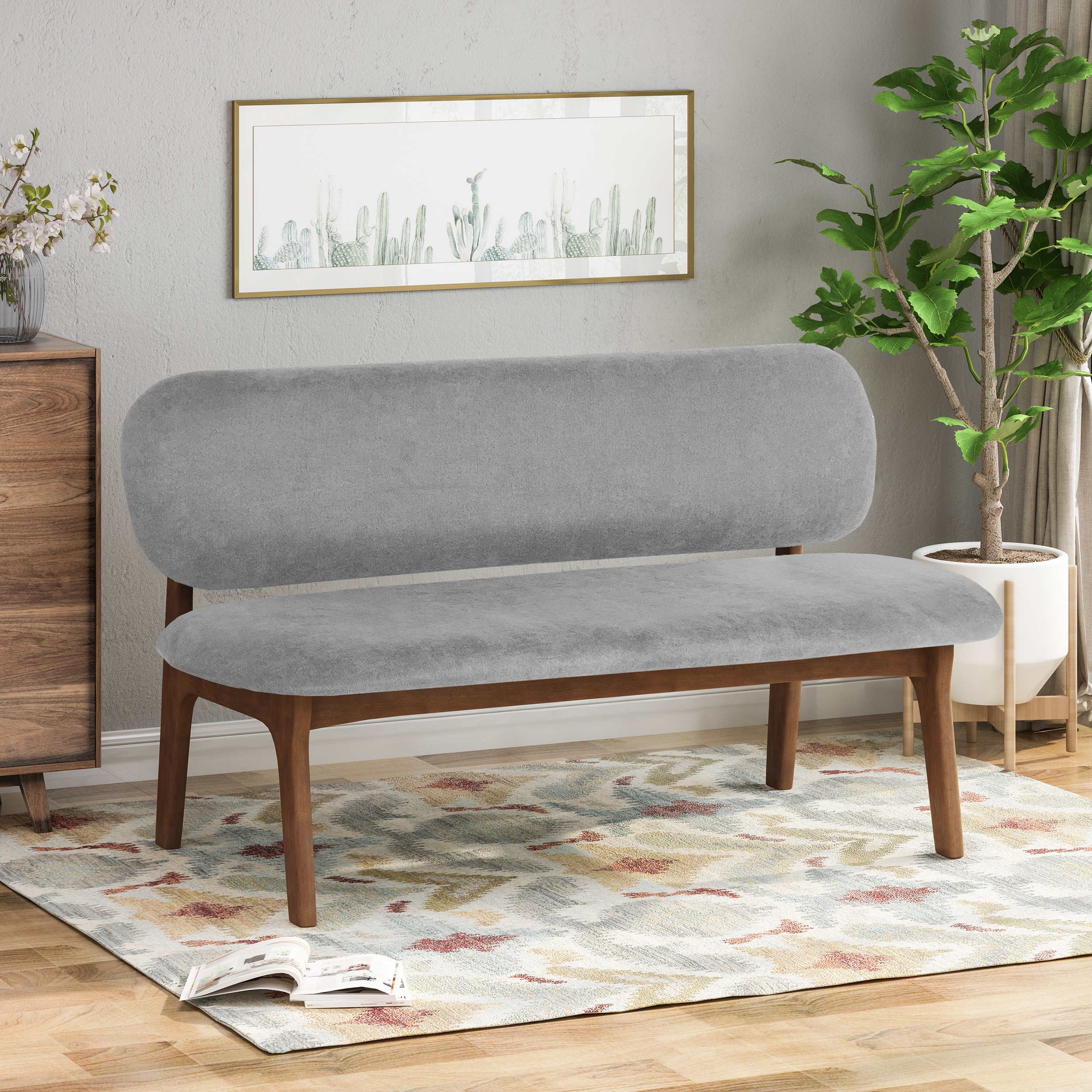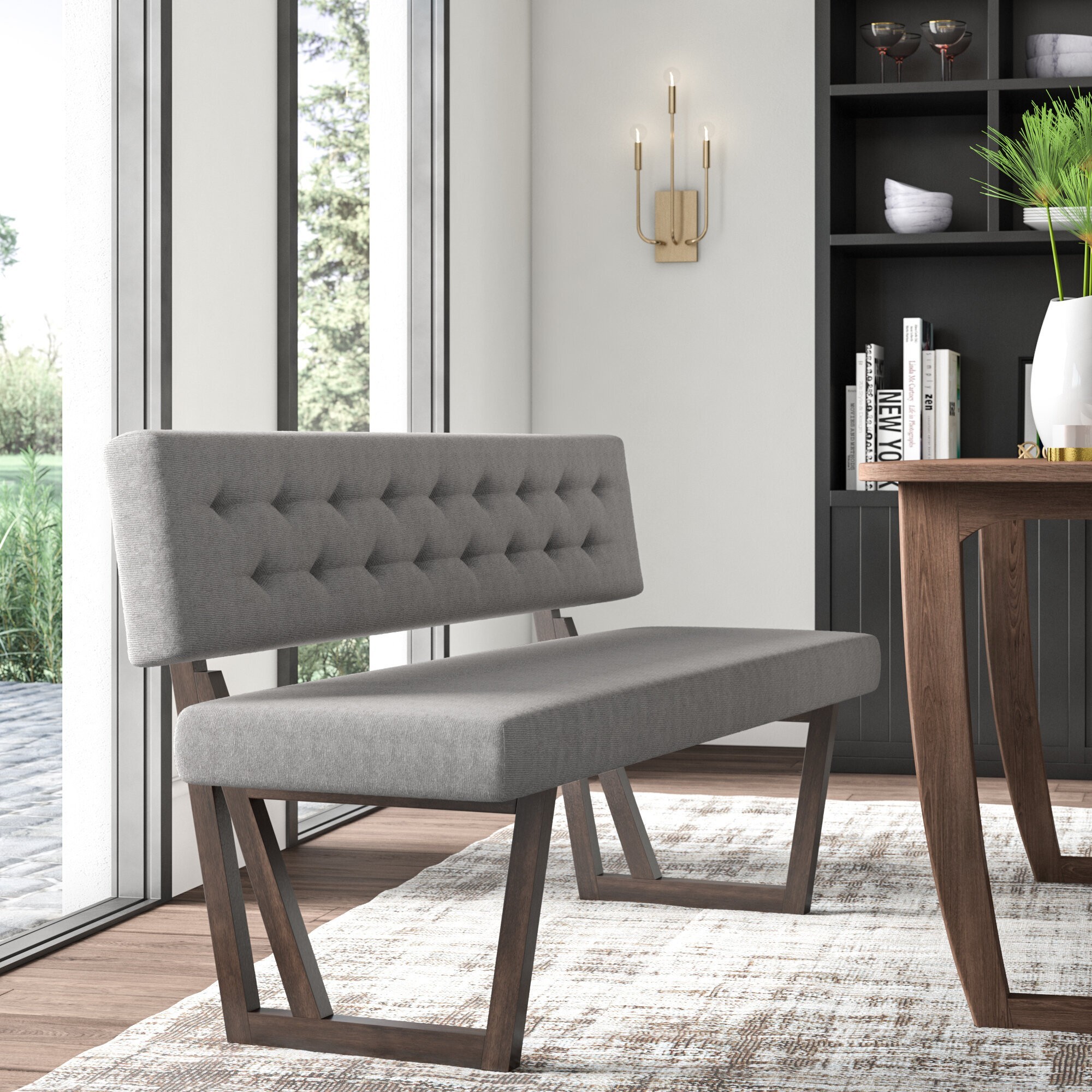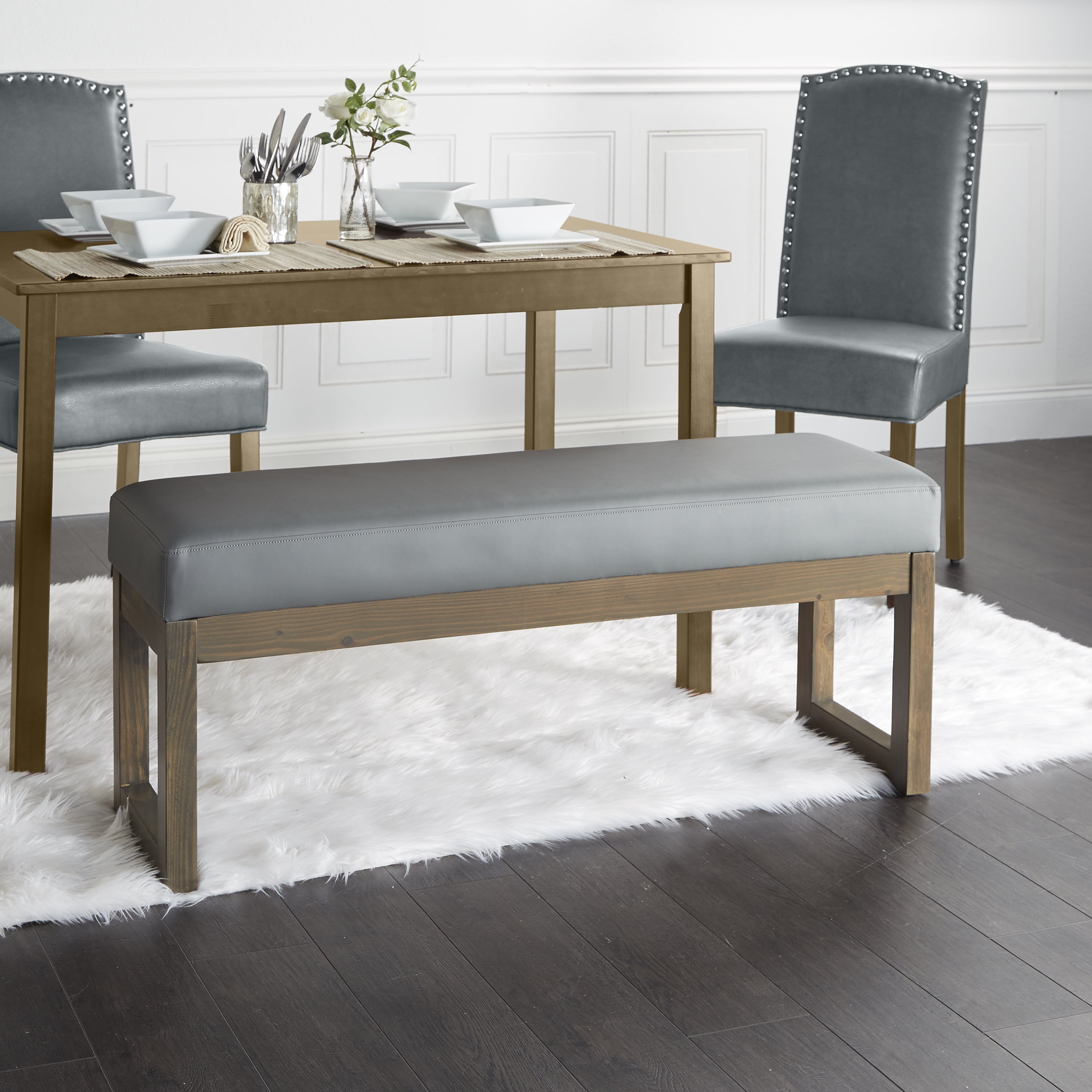Types of Bench Chairs for Dining Tables

Choosing the right bench chair for your dining table can significantly impact the overall aesthetic and functionality of your dining space. The style, material, and construction of the bench should complement your table and reflect your personal style. Consider factors like the size of your dining area, the number of people you need to seat, and the overall design scheme of your room.
Bench chair for dining table – A wide variety of bench chair styles are available to suit diverse tastes and home decor. Careful consideration of material and construction will ensure both aesthetic appeal and lasting durability.
Bench Chair Styles and Materials
| Style | Material | Pros | Cons |
|---|---|---|---|
| Farmhouse | Wood (often pine or oak), sometimes with a distressed finish | Rustic charm, durable, relatively inexpensive, versatile style that complements many decors. | Can be heavy, may require more maintenance (e.g., occasional refinishing), susceptible to scratches and dents. |
| Modern | Metal (steel, aluminum), wood with clean lines, plastic (high-quality resin), or a combination | Sleek and contemporary look, often lightweight and easy to move, can be very durable depending on the material. | Metal can be cold to the touch, some materials may be less comfortable for prolonged seating, certain styles may be less forgiving of wear and tear. |
| Rustic | Reclaimed wood, rough-hewn timber, wrought iron | Unique character, adds warmth and texture to a dining space, environmentally friendly if using reclaimed materials. | Can be expensive, may require significant maintenance, not suitable for all interior styles. |
| Traditional | Solid wood (mahogany, cherry), upholstered seats and backs | Elegant and timeless, comfortable seating, adds a sense of sophistication. | Generally more expensive, can be heavy and difficult to move, requires regular maintenance to preserve the wood and upholstery. |
Design Elements for Visually Appealing and Functional Bench Chairs
The design of a bench chair significantly impacts its visual appeal and comfort. Ergonomics play a crucial role in creating a comfortable seating experience, while aesthetic considerations enhance the overall dining room ambiance.
Several design elements contribute to a bench chair’s visual appeal. Consider the shape and size of the bench in relation to your dining table. The proportion should be harmonious; a too-small bench will look lost, while an overly large bench can overwhelm the space. The finish of the wood, the style of the legs, and any decorative details all contribute to the overall aesthetic. For example, a simple, clean-lined bench can create a minimalist feel, while a richly carved bench adds a sense of opulence.
Ergonomics focuses on creating a comfortable and supportive seating experience. The height of the bench should be appropriate for the height of the dining table, allowing for comfortable posture while seated. The depth of the seat should provide adequate support without feeling cramped. The backrest, if present, should offer comfortable lumbar support. Consider the cushioning; a well-padded seat and backrest can greatly enhance comfort, especially during longer meals. Finally, the material of the bench should be chosen with comfort in mind; harder materials like metal may require cushions for increased comfort.
Integrating Bench Chairs into Dining Room Design: Bench Chair For Dining Table

Bench chairs offer a versatile and stylish addition to any dining room, enhancing both functionality and aesthetics. Their incorporation significantly impacts the overall feel of the space, influencing everything from seating capacity to the room’s perceived size and formality. Careful consideration of factors like size, shape, and color allows for seamless integration into diverse design schemes.
Bench Chair Placement in Various Dining Room Layouts
The strategic placement of bench chairs can dramatically alter the perceived size and flow of a dining room. In smaller spaces, a single bench paired with individual chairs can create a more intimate and less crowded feel than a full set of chairs. This allows for optimal use of space without sacrificing seating. Conversely, in larger dining rooms, multiple benches can be arranged around a substantial table, promoting a sense of community and shared dining experiences. Formal settings might benefit from elegant, upholstered benches, while informal spaces could embrace rustic wooden benches for a more relaxed atmosphere. For example, a small galley kitchen dining area might best utilize a single, narrow bench against one wall, leaving ample walkway space. In contrast, a spacious farmhouse dining room could comfortably accommodate two long benches facing each other, creating a convivial, communal seating arrangement.
The Influence of Bench Chair Dimensions, Form, and Hue on Dining Room Aesthetics
The size, shape, and color of bench chairs directly affect the visual impact within a dining room. A large, bulky bench in a small room can overwhelm the space, creating a cramped and cluttered appearance. Conversely, slender, minimalist benches in a spacious room might appear lost and insignificant. The shape of the bench also matters; curved benches soften the lines of a room, while straight-edged benches lend a more modern, structured feel. Color plays a crucial role too; a brightly colored bench can act as a focal point, adding vibrancy and personality, while a neutral-toned bench blends seamlessly into the background, creating a sense of calm and understated elegance. For instance, a bright turquoise bench against a neutral backdrop could serve as a bold accent piece in a minimalist dining room. In contrast, a dark stained wooden bench might blend effortlessly into a traditional dining room with dark wood furniture.
Three Distinct Dining Room Designs Featuring Bench Chairs
The following examples showcase the versatility of bench chairs in creating diverse dining room aesthetics.
| Design Style | Color Scheme | Furniture Choices | Lighting | Ambiance |
|---|---|---|---|---|
| Modern Minimalist | Neutral whites and greys with a pop of teal | Sleek, white dining table; two slender, teal upholstered benches; minimalist metal chairs; simple, geometric pendant light. | Bright, natural light supplemented by a sleek pendant light above the table. | Clean, airy, and sophisticated. |
| Rustic Farmhouse | Warm browns, creams, and natural wood tones | Large, reclaimed wood dining table; two long, rustic wooden benches; wrought iron chairs; warm, ambient lighting from wall sconces and a central chandelier. | Warm, incandescent lighting from a central chandelier and wall sconces, creating a cozy and inviting atmosphere. | Inviting, comfortable, and homely. |
| Elegant Traditional | Rich jewel tones (emerald green, sapphire blue) with gold accents | Large, dark wood dining table; two ornate, upholstered benches in emerald green velvet; elegant gold-framed chairs; crystal chandelier; subtle uplighting. | A dramatic crystal chandelier provides the primary light source, complemented by subtle uplighting to highlight architectural details and create a luxurious ambiance. | Luxurious, formal, and sophisticated. |
Purchasing and Maintaining Bench Chairs

Selecting the right bench chair for your dining table involves careful consideration of several key factors to ensure both aesthetic appeal and practical functionality. The size and style of the bench should complement your existing table, creating a cohesive and inviting dining space. Proper maintenance will also extend the lifespan of your bench and preserve its beauty.
Choosing a bench chair that harmoniously integrates with your existing dining table requires a thoughtful approach. The dimensions of your table directly influence the size and number of benches you can comfortably accommodate. Measure your table’s length to determine how many people you wish to seat and the appropriate bench length. Consider the width of the bench in relation to the table to ensure adequate legroom and comfortable seating. Style-wise, the bench’s material, design, and finish should complement the table’s aesthetic. For example, a rustic wooden table might pair well with a simple, similarly styled wooden bench, while a modern glass table might be complemented by a sleek metal or upholstered bench.
Bench Chair Sizing and Style Selection
Appropriate bench sizing is crucial for comfortable dining. A general guideline is to allow approximately 24 inches of width per person on a bench. Therefore, a bench for two people should be at least 48 inches long. However, this is a guideline; individual preferences for personal space may vary. Consider the overall dimensions of your dining area to ensure the bench doesn’t overwhelm the space. The style of the bench should complement the dining table and overall room décor. A formal dining setting might call for an elegantly carved wooden bench, while a casual setting might benefit from a simple, unadorned design.
Maintaining Wood Bench Chairs
Proper care will preserve the beauty and longevity of your wooden bench.
- Regular dusting with a soft cloth will remove surface dust and prevent buildup.
- For more thorough cleaning, use a damp cloth with a mild soap solution. Avoid excessive moisture, which can damage the wood.
- To remove minor scratches, use a wood polish or furniture wax, following the manufacturer’s instructions.
- Protect your bench from direct sunlight and excessive heat to prevent fading and warping.
- Apply a protective sealant periodically, especially in high-humidity areas, to prevent moisture damage.
Maintaining Metal Bench Chairs, Bench chair for dining table
Metal benches require different maintenance techniques compared to wooden ones.
- Regularly wipe down the metal surface with a damp cloth to remove dust and fingerprints.
- For stubborn stains, use a mild soap and water solution. Avoid abrasive cleaners, which can scratch the metal surface.
- Periodically inspect for rust or corrosion, especially in damp environments. Address any signs of rust promptly with a rust remover and protective coating.
- Apply a protective sealant or wax to help prevent rust and maintain the finish.
Maintaining Fabric-Upholstered Bench Chairs
Fabric-covered benches require specific cleaning and care to maintain their appearance and hygiene.
- Regular vacuuming or brushing will remove loose dirt and debris.
- Spot clean spills immediately using a clean cloth and appropriate stain remover. Always test the stain remover on an inconspicuous area first.
- For more thorough cleaning, follow the manufacturer’s instructions for cleaning the upholstery fabric. Some fabrics may be machine washable, while others may require professional cleaning.
- Protect the fabric from excessive sunlight and moisture to prevent fading and damage.
- Consider using fabric protectors to help repel stains and spills.
